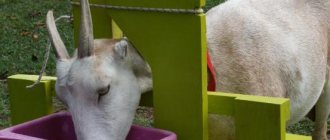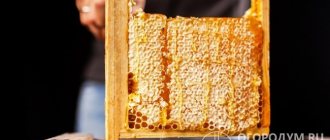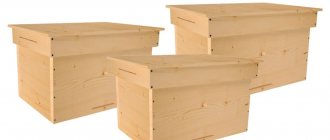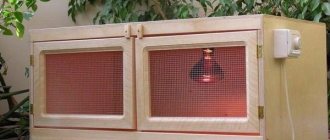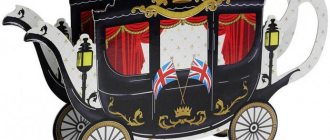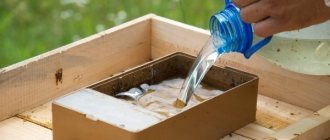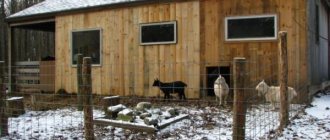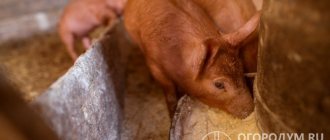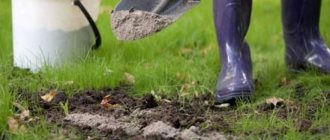Home » Articles about turkeys » Feeders for turkeys
Feeders made of plastic, wood or metal are installed in the poultry house. Each of the materials has its pros and cons. Different designs of turkey feeders are used, the way they are placed and the option of filling them with food differ. Some models are easy to make yourself using available materials.
Organization of walks
A house for turkey poults should be built in such a way that the turkeys feel comfortable there.
The bird also needs proper organization of walking, which is a prerequisite for the life of the bird. The best option for a turkey is when it has 20 square meters of free air space, but if you look at this size through the eyes of a farmer raising turkeys in normal home conditions, these sizes are very large. In order for the turkeys to be happy and benefit exclusively from being outdoors, the soil must be prepared in advance before the birds move into the barn. The soil must be sown with seeds of useful and perennial grasses; the most suitable ones are considered to be alfalfa or clover. You can also sow any type of annual grass on the ground, as it is no less useful, including oats and peas. If the area near the barn is sown with such herbs, then this is a real godsend for turkeys, especially for characteristic individuals. The turkey differs from similar individuals in that it is more active and mobile, and therefore requires space. For example, a turkey can calmly walk several kilometers and go back to the poultry house, but a turkey that has its own young returns to such walks only after the young have lived for 2-3 weeks.
How to make a turkey feeder - instructions
If you are not ready to shell out decent money for a factory-made turkey feeder, we suggest you make one yourself.
Before starting work, you need to thoroughly wash and disinfect all materials, as well as tools that will be used.
Consider the option of making a feeder using a plastic pipe.
For this you will need:
- plastic pipe about 1 m long and 110 mm in diameter, two plugs,
- pipe tee,
- pipe cutting tool.
VIDEO INSTRUCTION
Operating procedure:
- Cut the pipe into three lengths of 10, 20 and 70 cm.
- Close a 20 cm long section with a plug on one side and put on a tee on the other.
- Connect a 70 cm long piece on top and put a plug on it.
- Place a 10 cm long piece into the side outlet.
- Fill the feeder with food and secure it to a vertical surface so that it does not tip over.
Such a feeder is convenient because the birds will not throw away food, but it will contain quite a lot of food.
Plastic pipe feeder
Another option is a bunker-type feeder.
To make it you need:
- scissors for plastic or metal,
- plastic bucket,
- dog food bowl with sections.
VIDEO DESCRIPTION
- Cut as many holes in the bottom of the bucket as there are compartments in the bowl. They should be of such a size that the food flows freely into the bowl.
- Connect the bowl and bucket with screws.
- Fill the bucket with food and close it with a lid.
- Hang the feeder vertically or place it on a flat surface.
By hanging such a feeder by the handle, you can be sure that the birds will be provided with food in the next few days.
Thus, from cheap scrap materials you can quickly and at minimal cost make convenient feeders for your turkeys.
How to make water bowls for turkeys with your own hands
Turkeys drink much more water per day than they eat feed. This means that the drinking bowl must be large enough so that there is enough water for everyone. This will avoid the death of the herd, as well as the spread of various diseases.
If it is difficult to ensure an uninterrupted supply of drinking water, you can use a nipple model of the drinker.
The chicks can be watered from vacuum drinkers for the first time, and a drip model can be installed a week after birth.
Nipple models are very convenient, which is why they are used on most farms. The principle of their operation is quite simple - a hose with a shut-off nipple at the end is connected to a container of water.
The nipple has the shape of a cone, it is movable and with any even small efforts drops of water appear at its end. Such drinkers are suitable not only for turkeys, but also for other types of poultry - ducks, geese, chickens. In addition, such a drinking bowl is hygienic, because the birds do not have direct access to water.
We make our own waterer for turkeys from a plastic bottle
If you decide to make a drinking bowl with your own hands, the easiest option is to make it from two parts.
To make it you will need:
- large, deep nylon cover,
- plastic bottle or glass jar.
Operating procedure:
- A hole is made in the bottle at a height of approximately 2 cm.
- The bottle container is filled with water and a cap is put on the neck.
- In this position, there will always be water in the nylon lid, but it will not overflow over the sides of the lid. As the turkeys drink, more liquid will be added. This is convenient because the birds will not splash the water.
This drinker operates on the vacuum principle, and due to the lack of dampness, it is suitable for use in any poultry house.
The main disadvantage of such a drinking bowl is its instability. Adult birds can loosen it, causing water to splash.
In this regard, it is worth using a vacuum drinker, as in the video above, if the number of turkey poults in the herd does not exceed a dozen. With this quantity, it will be possible to keep the chicks under control and prevent the destruction of the drinking bowl.
In the summer, it is recommended to additionally place large containers of water in the poultry house.
Perches for turkeys: drawings and construction instructions
Having decided on the materials and having found the necessary tools, you can begin drawing up and developing a drawing. Even if you want to implement your personal ideas for building a unique cage for turkeys, you need to be guided by already tested and invented schemes.
Consider the overall dimensions of the entire turkey poultry and the location of windows, doors, walls, feeders, drinkers, ash and sand trays and other details. The location of the walking area in relation to the entrance to the turkey house is also important. According to farmers, the window should open easily and provide a powerful stream of light for the comfort of turkeys. The feeder is located along the walls or wall of the turkey poultry at the level of the bird's body for convenient feeding.
Please note that the proper level of location of the turkey’s place of residence is not located in a draft, because this will lead to diseases of the birds and the inability to perform an important function: egg production. The poultry farmer must be comfortable pouring feed, adding water and collecting eggs from perches, so consider their overall placement throughout the poultry house. The turkey should also have easy access to these items.
The turkey should also have easy access to these items.
How can you quickly and at minimal cost build a perch? Follow these guidelines from experienced farmers:
Turkey poultry in the barn
The interior should also be equipped for the birds to live comfortably. Here you need to install the following devices:
- feed containers;
- drinking bowls;
- perches;
- nesting houses;
- ash baths;
- containers for shell rock and gravel.
There are several types of feed containers:
- small troughs;
- grooved structures.
When choosing one option or another, take into account the dimensions of the bird and their height. Feeders are placed at the level of the turkeys' dorsal region. For more rational use, it is necessary to pour food into the container to 1/3 of the total height.
Compound feed is usually given from bunker-type feeders, which are designed for several feedings.
Containers for gravel and other mineral fertilizers are located at a height of about 40 cm from the floor. Add the necessary additives as needed. It is recommended to leave such containers freely available.
Making a separate container for wet mash is not entirely advisable. To save effort and time, it is enough to divide the trough feeder into several compartments with partitions, into which certain types of feed will be poured.
There are a huge number of options for drinking bowls, regardless of the chosen container, it is best placed at the level of the turkey’s neck. To maintain cleanliness in the premises, the drinking bowls are covered with a net so that the birds have no problems getting to the water. The net will serve as a kind of protection against the desire of birds to climb completely into the drinking bowl.
Drinking bowl
Perches are necessary for turkeys to rest and sleep: they are installed in such a way that there is at least 50 cm of perch per bird. The main criteria here are the strength of the sticks and their removal of possible burrs. Perches are installed in the warmest part of the house.
When arranging perches, preference should be given to removable structures that can be easily dismantled during general cleaning.
Nesting houses provide certain conveniences for both bird owners and turkeys. The females will have a place to lay their eggs, and the farm owner will not have to walk around the entire premises to collect egg products.
Turkey nest
The role of nests is given to wooden boxes that are suitable in size for the birds. The number of houses is calculated based on the number of females. As a rule, one nest is required for 5 laying hens, which is best installed in a dark place in the house
The most important requirement for a design is that it is safe for turkeys.
Ash baths help birds keep their plumage clean. In the summer, you can do without this - it will be enough for the turkeys to take dry baths in the yard. But with the onset of cold weather, it is worth taking care of the presence of wooden boxes with small sides, which must be filled with a sand-ash mixture. This method reliably protects turkeys from the appearance of skin and feather parasites.
- The walls are covered with roofing felt.
- make a lath for thermal insulation material.
- Insulation is reinforced on the sheathing.
- cover it with roofing felt.
- fix the entire structure with planks or sheathing: in this case, the turkey barn can be decorated with siding yourself.
- If the floor in the barn is unpaved, then they make a screed on it, cover it with roofing felt, cover the floor with expanded clay, and cover it with another layer of waterproofing. After this, a wooden floor covering is made.
- Electricity is installed in the barn and lamps are installed.
- It is recommended to make a window in the barn.
- A ventilation pipe with a shutter is installed in the roof. If necessary, open the shutter and ventilate the room.
It is recommended to make an extension to the turkey barn, a vestibule. It is necessary to protect the room from cold air. Turkeys are very thermophilic. Even a small temperature difference can cause them to become hypothermic. An area for an aviary is fenced off near the barn. In it the livestock will exercise.
A brick building is considered the most reliable. When building in warm regions, 1-brick masonry is used. In cold areas, the walls of the poultry house are built with 1.5 bricks. Walls and roofs are protected from moisture and insulated
Whatever the building, it is important to maintain optimal conditions for keeping turkeys. For them, the main thing is cleanliness, warmth and fresh air.
Automatic drinking bowl and feeder for poultry: geese, chickens, turkeys. Do-it-yourself.TitleDrinker and automatic feeder for poultry: geese, chickens, turkeys. With your own hands. Watching time 2:24 Title From city to village / Making nests for turkeys Watching time 13:23
What you need to know before creating feeders
As you know, the feeder must correspond to its contents, because food for young animals and turkeys can be:
- Solid;
- Wet;
- Combined.
Therefore, appropriate materials should be selected for each type of feed.
Wet food should be placed in stainless steel or plastic containers. Each poultry farmer chooses the volume of the feeder for dry food according to his own experience; some choose compact ones, while others choose a volume that can accommodate a day’s supply of dry food. The main condition for all feeders is that they should be slightly raised above the floor, approximately to the middle of the turkeys’ chest. For such placement, feeders are attached to some vertical surface in the turkey poultry, for example, to a pole.
When you make the feeders, observe the livestock during the first month to see how comfortable they are with the devices made. You may need to make some design changes specifically for your poults and adult birds.
In any case, self-made feeders will significantly reduce the financial costs of setting up a turkey poultry farm.
https://youtube.com/watch?v=VIDEO_ID
Each design is accompanied by a photo to eliminate possible errors in their manufacture. In the video you can watch the process of creating a drinker and feeders for turkeys.
Material
The simplest option is wooden trays. Their advantages:
- environmental friendliness;
- stability and reliability of the structure.
The main disadvantage is that it is difficult to ensure complete disinfection of wooden structures due to the presence of pores. Absorbed food remains become a favorable environment for the development of pathogenic microorganisms. Taking this into account, wooden containers are only suitable for dry food, as well as crushed stone and chalk (shells) - mash cannot be placed there.
Metal products are hygienic. Providing their disinfection is not difficult - in addition to soap solutions, you can use firing. The main disadvantage is that the sharp edges can easily injure the bird. You can eliminate the risk of injury by bending the metal edges inward. Solid metal containers are suitable for both dry and wet food. Lattice models are used for laying fresh herbs.
Another universal material suitable for different feed options is plastic. Since turkeys are heavy, when choosing a plastic feeder, preference is given to models with the thickest walls and a stable bottom.
Before you start: turkey poultry requirements
The requirements for a room for birds depend on how many there will be, what breed is planned to be kept, and in what climatic conditions the settlement is located.
In general, you need to assume that the birds have enough space, warmth and comfort to live. Therefore, the requirements for turkey poultry are approximately the same as similar structures for other birds:
The minimum space for 1 adult should be 1m2, and small turkey poults can accommodate 5 heads in the same area. Accordingly, to breed even a small flock of turkeys (15 birds) you will need a room with a minimum area of 15 m2.
A minimum of 1 square meter is required per turkey. meter of space
The turkey house should be warm enough all year round. This requirement is especially relevant for regions with severe winter temperatures and constant winds that emasculate rooms (for example, in the steppes). The specific temperature regime depends on the breed of turkeys - domestic representatives can withstand fairly cold winters - it is enough for them that the air warms up in winter at about 0 ° C. And turkeys of foreign breeds, as a rule, require +10°C. Inside, the house should certainly be divided into several compartments to separate small turkey poults from the rest of the flock
It is also important to properly build perches for turkeys so that they can feel comfortable while laying and incubating eggs.
All rooms for turkeys are divided into compartments
To avoid drafts, you should insulate the walls and make a minimum of window openings, which birds need in certain quantities - there should be no darkness in the turkey house. Many turkeys like to live in dry rooms - from this point of view, it is important to ensure that moisture does not come from the ground: you should create a good foundation and floor. To prevent indoor air from stagnating, it is important to build a poultry house only from natural materials - wood. Finally, it is advisable to have a spacious aviary next to the turkey poultry, where the birds can go immediately upon leaving their house and take a walk.
The presence of an aviary next to the turkey poultry is a mandatory requirement
It is these requirements that need to be taken into account at the stage of choosing a location and the construction work itself.
This is interesting: Rouen duck - description and characteristics of the breed, care and maintenance of the bird at home
Hopper type feeders
This type of structure is most often built on large chicken farms, since this method of feeding poultry requires little energy expenditure from humans. The grain is poured into a special container and, under its own pressure, gradually disperses among the birds. A DIY automatic chicken feeder is also suitable for larger poultry such as turkeys or ducks. To make such a structure you will need the following materials:
- Plastic pipes with a diameter of 20 and 35 centimeters.
- Wooden plank.
- Ten liter water bottle.
- Electrical tape, self-tapping screws, corners, rope.
The tools you will need for construction are a screwdriver, a hacksaw and a hammer. A large pipe is attached at the end to a plywood base using corners and self-tapping screws. A narrow one is installed in the center of the wide pipe. Using a hacksaw, oval holes with a diameter of ten centimeters are cut out in plastic.
It is important to keep the plastic rim in the wide pipe, otherwise birds will spread the grain on the ground. The bottom of the bottle is cut off, after which it is fixed with the neck to a narrow pipe and secured with electrical tape
To prevent debris from getting into the hopper, the bottom is not completely cut off and used as a lid. Dry grain is poured into such feeders, since wet mash can clog the holes. For turkeys and chickens, you can use a similar system using a liter bottle. Experienced breeders recommend that beginners watch a training video before building this structure.
Making a brooder
It is recommended to keep turkey poults in a brooder in the first days of life. To make such a device with your own hands, you need to find a suitable drawing that will help you determine the stages of manufacturing and the appearance of the structure.
In addition to the drawing, you need to prepare some tools:
- Electric jigsaw.
- Hammer.
- Screwdriver.
- Roulette.
- Wire cutters
- Pliers.
- Pencil.
In addition to tools, you need to select materials.
For these works, you can use any available materials or specially purchased ones.
- Wooden beams or slats.
- Plywood or multi-layer cardboard.
- Fine mesh.
- Door handles.
- Self-tapping screws and other furniture fittings.
- Cable.
- Bulb.
- Switch.
Making a brooder begins with a frame. The first thing you need to do is calculate its dimensions, which are determined depending on the number of young animals.
To make the frame, wooden beams or slats are used, and plywood is used to cover the walls. The front of the brooder should consist of two doors through which the babies can be fed and cared for.
The floor must be made of mesh, and a tray must be placed at the bottom into which the droppings will spill.
To make the frame, take two sheets of plywood, measuring 1.50 x 1.50, and cut them into two halves. One half needs to be cut in two again to create two 0.75 x 0.75 pieces that will be the sides of the brooder. The remaining parts will need to be used for lining the ceiling, rear part and floor of the structure. Having thus prepared the parts, you can begin assembling them, using self-tapping screws and corners for fastening.
Brooder mesh tray
All that remains is to prepare the pallet. It is made from wooden slats, but instead of mesh it is necessary to use plastic panels.
The last stage is lighting. To do this, you need to attach one piece of cable to the socket and the other to the plug. The cartridge must be fixed to the ceiling.
Preparing to build a turkey poultry barn
Before construction, you need to develop drawings of the turkey poultry itself and the adjacent enclosure. This way you can calculate the amount of material spent. If possible, adults should be fenced off from young animals and have the opportunity to walk separately. To do this, organize an aviary with feeders and drinkers so that the birds can freely reach them. It is necessary to build a building with the expectation that the livestock will increase. No more than one adult turkey can be kept per 1 m², since the birds are large and, unlike chickens, do not really like roosts.
The barn project should include not only the poultry room itself and the pen, but also a vestibule. It will protect the turkeys from drafts and exposure to cold air when the door is opened. In order to save space. In the vestibule you can make shelves for storing household equipment or food for animals and birds. Housing plans sometimes include a separate area for brood turkeys, as well as small turkey poults.
In order to consume less electricity for artificial lighting of the room, it is recommended to take care of the windows. If during the day all the corners of the barn are illuminated, then the windows are located correctly and this is enough to illuminate the barn. The window is located at a height of at least a meter above the ground.
Building a turkey poultry house with your own hands involves laying smooth floors from wooden planks or concrete. This part of the barn plays an important role in protecting the birds from the weather and predators.
The floor in the turkey house itself should be inclined to facilitate the cleaning process. Often, for this purpose, a removable flooring is made under the perch, since this place is most contaminated with feces.
Each farmer can choose the material for laying floors independently. This could be concrete, wood or earth. Each of these coatings has its own pros and cons:
- An earthen floor has a low cost and this is its only advantage. Such floors do not maintain temperature well in winter; they have to be covered with straw during frosts. Also, feces, spilled water and leftover food mix with the soil, forming slurry. Such violation of sanitary standards leads to fatal diseases. In winter, turkeys standing in this slurry can freeze their paws. Sometimes earth is mixed with clay in equal proportions. In this case, moisture is better repelled from the floor covering, but cleaning still remains problematic. Such floors have to be replaced frequently.
- Concrete floors are distinguished by the fact that they do not absorb moisture and are easy to clean and disinfect. It also reliably protects the floor from undermining by predators who want to feast on turkey meat. The main disadvantage is that in winter it can become very cold, and it is recommended to cover it with straw or sawdust.
- A wooden floor requires large material costs, but it protects turkeys from the cold better than others. It is quite easy to clean and disinfect. But over time, the tree absorbs moisture and begins to swell and rot. If you do not clean the turkey poultry in a timely manner, the smell of bird droppings will be absorbed into the boards.
Whatever the floor in the barn, the main requirement for it is ease of cleaning, as well as compliance with sanitary standards. It is recommended to place it 20-25 centimeters above the ground.
Creating an enclosure for walking
The walking enclosure should be safe and spacious. Turkeys are quite winter-hardy birds, so they can walk in the enclosure even in winter.
Having decided on the size of the required pen, dig in timber at the corners of the perimeter. Using fasteners, install horizontal logs on them in three levels: above the ground, in the middle and along the top level. Cover the resulting frame with galvanized chain-link mesh.
The aviary should be high enough, at least 2 m, because turkeys fly well. It is recommended to also make the ceiling from mesh. This will protect against other birds and predators.
The floor in the enclosure is cleared of vegetation and covered with sand and sawdust. When installing, make doors to enter the enclosure for cleaning and other household chores.
General requirements for installing drinkers for turkeys
First and foremost, turkey drinkers should be easy for the birds to use. They need to be located so that turkeys have unhindered access to water around the clock.
The liquid must be clean. To do this, the structure is installed at the height of the turkey’s back. The water must be changed periodically to ensure it is always fresh. Containers should be easy to clean and disinfect.
Turkeys are large and strong birds, so durable drinkers should be installed. These birds are also individualists. The ideal option would be to organize a watering hole in such a way that each bird uses its own drinking bowl. Otherwise, fights are possible, even to the point of seriously injuring each other.
There should be different sized structures for turkey poults and adult birds.
It is important to choose a drinking bowl so that turkeys cannot splash or spill water from the tank, otherwise there is a risk that the birds will get wet and get cold
When it's hot, turkeys may turn over their waterers to cool off. To avoid this, you can install containers with water for bird bathing in the summer.
To prevent this from happening, you should put a wooden circle in the water, in which you first need to cut several holes (3-4 pieces). Turkeys will drink water through them. The wood will float on the surface and prevent the water from freezing.
For newborn turkey poults, it is better not to install nipple drinkers, because the babies will have to make additional efforts to drink from them.
You can buy a structure for a watering hole or make it yourself. Each type has its own pros and cons, so before purchasing or designing, you should carefully consider and weigh everything.
Alternative option from plywood sheets
You can build another quite interesting brooder with your own hands from ordinary plywood sheets. To do this, use the following additional materials:
Ready-made plywood brooder
- wooden boards;
- plaster mesh;
- screws or small nails;
- wooden beam;
- washers;
- staples;
- hinges for securing doors - 4 pieces;
- cable;
- cartridge;
- fork.
Manufacturing technology
- You need to build a strong frame from wooden blocks. First start making the lower and upper frames. Fasten them using the same bars, which should be installed perpendicularly. The length of the finished product should be 1.5 m, height – 0.5 m, width – 0.5 m.
- Install lintels made of wooden boards in the middle of the upper and lower frames. In the lower part it will give strength to the bottom, and in the upper part it will help attach the doors.
Assembling a brooder box from plywood
Assembling plywood brooder doors
Have you ever experienced unbearable joint pain? And you know firsthand what it is:
- inability to move easily and comfortably;
- discomfort when going up and down stairs;
- unpleasant crunching, clicking not of your own accord;
- pain during or after exercise;
- inflammation in the joints and swelling;
- causeless and sometimes unbearable aching pain in the joints.
Now answer the question: are you satisfied with this? Can such pain be tolerated? How much money have you already wasted on ineffective treatment? That's right - it's time to end this! Do you agree? That is why we decided to publish an exclusive interview with Professor Dikul, in which he revealed the secrets of getting rid of joint pain, arthritis and arthrosis.
Read the interview.
Features of devices and their placement
To create drinking bowls you need to use the necessary materials of good quality. You should also consider the size and age of turkeys, their number and frequency of use of water containers. Young individuals consume about 0.3 liters per day, older individuals - 0.5-0.6 liters. Each bird should have about 5cm of personal drinking space.
It is recommended to make drinking bowls for turkeys dismountable, this will make them easier to clean. To make them less dirty, they should be placed at chest level with the birds. Often individuals jump on them, so the products must be durable and not collapse under their weight. If the poultry house contains a small number of livestock, it is recommended to install separate drinkers. This will avoid fights over territory. It should also be remembered that chicks are much smaller than adults, so drinking bowls for turkey poults should be placed slightly lower.
When installing drinking devices, you need to rely on the following factors:
- Structures should be made so that water does not splash onto the turkeys' limbs. Otherwise, this may cause frequent illness and hypothermia;
- In addition to drinking bowls, you need to prepare containers for bathing during hot periods so that they can cool themselves;
- To prevent the water from freezing in winter, a circle with small holes made of wood is placed inside.
It is necessary to constantly monitor the amount of water in the sippy cup. You can assemble drinking devices yourself or purchase ready-made products, and they can be manual or automatic. There are several types, different in design and type of work.
In this case, several large containers (basins, buckets) are traditionally used. They are placed on a layer of material to prevent debris from getting into the water. But they are suitable for adult birds, as chicks can fall into them and drown. Although this is the most economical option, requiring no money or time to manufacture.
Do it yourself
Factory-made drinkers for turkeys can be quite expensive and are not always the standard of reliability. With very little skill, using a regular tool, every poultry farmer can make a structure for his birds from scrap materials in a short time. To make a homemade device, you can also use purchased materials, but their cost cannot be compared with an industrial drinking bowl.
What to evaluate when choosing for self-production
The type of material is also important. Plastic containers that are used for drinking water are very suitable for homemade dispensers. Environmentally friendly plastic is absolutely harmless and durable. There are designs of drinking bowls and feeders that are made from large-diameter polypropylene pipes. This material does not emit toxic components, is very easy to process and is inexpensive.
With a large population, drinking bowls should be placed in such a way that each bird has free access to water.
Handy containers
The simplest drinking bowls can be made from any container of a suitable size. This could be a plastic basin or trough. Such structures are unreliable as they can easily tip over. In addition, you need to constantly monitor the availability of water.
From a plastic container, bottle
Polypropylene or polyvinyl chloride pipes, which are used in sewer systems, are convenient materials for making simple turkey drinkers. For this, thin-walled low-pressure pipes PN10 are used. To make a drinking bowl you will need the following:
- a straight section of pipe 1.0-1.5 meters long;
- two corner fittings at 90 0;
- clamps according to pipe diameter;
- self-tapping screws;
- sharp knife.
Using a knife, oval holes are cut in a piece of pipe through which the birds will drink. Angle fittings are placed on the pipe on both sides. Through them, water can be poured into the structure. They can be omitted by placing plugs on the pipe. With the help of clamps and self-tapping screws, the drinker can be easily fixed to any wooden structure.
In specialized stores you can purchase bell-type sockets. With their help, you can make a simple vacuum drinker for a large number of turkeys. To do this you will need the following parts:
- plastic barrel;
- hoses with a diameter of 8 mm;
- drinkers-bells.
The barrel should be placed on a hill and filled with water. Connect the plastic hoses to the drinking outlets, and simply place their other ends in the barrel. Water will be added by gravity to the drinking bowls as it is consumed.
To prevent mold from forming in the system, drinkers, hoses and the barrel must be washed regularly and disinfected with a chloramine solution once a month.
With microcups and fittings from the cistern
To make an automatic drinker, you will need a plastic tank, factory drinkers with micro cups and float fittings from the cistern. Drinkers with cups are cut into the lower part of the plastic tank. A water line is connected to the upper part, onto which a float system is installed. When the tank is full, the valve stops the flow of water into the tank. A decrease in water level causes the float to lower and the valve to open to allow water to flow.
To prevent dust from getting into the tank and the system, you can install an automotive fine filter at the outlet of the line.
Video about a turkey drinker and how to make one yourself.
https://youtube.com/watch?v=Ra5Z7AJSoug
Automatic views
The main difference between automatic drinkers and conventional ones is that water is added to the drinking container itself from the reservoir as it is consumed. Such structures do not require constant monitoring and can be left for a long period of time.
The main disadvantage of automatic factory drinkers is the strict requirements for water quality. Any mechanical particles can damage the valve and block the operation of the device.
Grooved AP-2
This system consists of a trough that is automatically filled with water through a float valve. The gutter is mounted horizontally at the required height. The system maintains a constant water level in the gutter. The device is designed for a large number of birds. The disadvantage of the design is that water can spill out of the gutter, which increases its consumption and worsens the sanitary condition of the turkey poultry. Poor water quality can cause the valve to become clogged.
Round bell type
The operating principle of a bell drinker is similar to a cup design. Here, the operation of the valve is also controlled by the container filled with water. When the water runs out, the container rises under the action of a spring and opens the water supply valve. The design uses a bell-shaped reservoir, along the outer wall of which water flows to fill the tray. The device is quite complex and is not suitable for self-production.
Nipple
The design of the nipple drinker is based on the principle that is used in country washstands. It is enough for the bird to touch the nipple valve with its beak, it opens, and the turkey receives a portion of water. There is a plastic cup installed under the nipple, which collects splashes and drops of liquid, so this design is considered the most hygienic. The nipple system has the following positive qualities:
- water does not stagnate;
- the drinking bowl does not require supervision and control;
- the number of cups is not limited;
- the bird receives water according to its needs.
How to make turkey feeders with your own hands
Let's look at simple devices for feeding turkeys that are not difficult to make yourself.
From plastic pipes
A plastic pipe will last a long time, and it’s quite easy to make a feeder out of it.
Materials:
- sewer pipe 1 meter long and 200 mm in diameter;
- stub;
- sleeve;
- wooden board measuring 200x200x2000 mm;
Tools:
- jigsaw;
- self-tapping screws;
- screwdriver or screwdriver;
- sandpaper.
Manufacturing scheme:
- A 2 meter long board is sawn in half. One part will serve as the base.
- The second part is also divided into two halves. On each workpiece, a semicircle equal to the diameter of the pipe is measured in the center. Afterwards it should lie comfortably in the wooden support.
- The finished supports are attached to the base board with self-tapping screws, departing from the edge approximately 30–40 cm.
- Next, prepare the pipe by marking it into equal parts.
- Slots are made along the marks from which the birds will feed. The shape of the slot does not matter and can be anything: oval, rectangle.
- One end of the pipe is closed with a plug, a sleeve is put on the other, turning the hole upward.
- The pipe is placed in the base. Ready.
Hopper feeder
The structure will consist of three compartments for food so that birds do not drown around it.
Materials:
- board as a base;
- four pegs;
- three 5 liter water bottles;
- self-tapping screws
Tools:
Sequencing:
- We place a wooden board on the floor, and screw wooden stakes to it on both sides.
- From the outermost peg we measure a distance equal to the size of the bottle, fasten the peg, then another one in the same way.
- The bottom of the bottles is cut off to a height of 10 centimeters, so that you get a bowl with sides.
- All three bowls are attached with self-tapping screws to the bottom, between the stakes.
- Then the bottles are placed neck down between the stakes and also secured with self-tapping screws.
- The feeder is ready, all that remains is to pour grain into it.
Video: bunker feeder from a barrel with a feeding table
Alternative option from plywood sheets
You can build another quite interesting brooder with your own hands from ordinary plywood sheets. To do this, use the following additional materials:
Ready-made plywood brooder
- wooden boards;
- plaster mesh;
- screws or small nails;
- wooden beam;
- washers;
- staples;
- hinges for securing doors - 4 pieces;
- cable;
- cartridge;
- fork.
Manufacturing technology
- You need to build a strong frame from wooden blocks. First start making the lower and upper frames. Fasten them using the same bars, which should be installed perpendicularly. The length of the finished product should be 1.5 m, height – 0.5 m, width – 0.5 m.
- Install lintels made of wooden boards in the middle of the upper and lower frames. In the lower part it will give strength to the bottom, and in the upper part it will help attach the doors.
Assembling a brooder box from plywood
Assembling plywood brooder doors
Have you ever experienced unbearable joint pain? And you know firsthand what it is:
- inability to move easily and comfortably;
- discomfort when going up and down stairs;
- unpleasant crunching, clicking not of your own accord;
- pain during or after exercise;
- inflammation in the joints and swelling;
- causeless and sometimes unbearable aching pain in the joints.
Now answer the question: are you satisfied with this? Can such pain be tolerated? How much money have you already wasted on ineffective treatment? That's right - it's time to end this! Do you agree? That is why we decided to publish an exclusive interview with Professor Dikul, in which he revealed the secrets of getting rid of joint pain, arthritis and arthrosis.
Read the interview.
